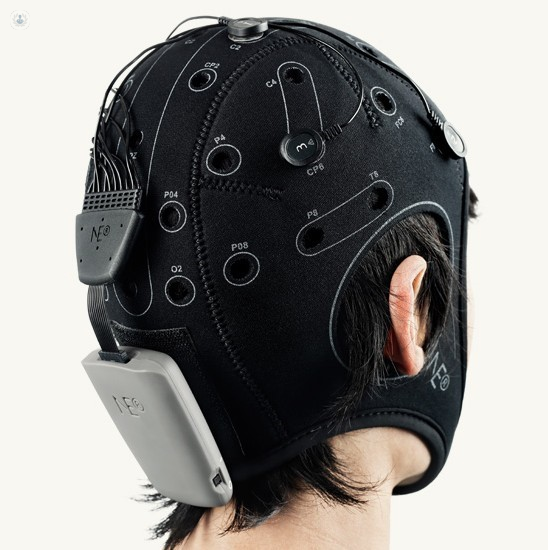Neuromodulation and transcranial electrical stimulation (tDCS)
Written by:The tDCS or DCT is a non-invasive brain neuromodulation method. It consists of applying tiny electrical currents through electrodes placed on the scalp.
How transcranial stimulation works
Transcranial stimulation produces immediate effects on neuronal excitability and long-term plastic effects associated with synaptic modification. The neuromodulatory effect of tDCS is achieved with the application, in a regular and repeated way, obtaining an increase of cerebral neuroplasticity. This effect makes possible the clinical improvement in certain neurological and psychiatric diseases. The tDCS is a treatment that enhances the effectiveness of other pharmacological treatments, allowing to reduce the dose of the same ones. It also has great potential in neurological rehabilitation programs, improving and accelerating clinical recovery.


How is transcranial stimulation treated?
Treatment with transcranial stimulation is noninvasive and painless. It does not require previous preparation by the patient and can be applied in both children and adults.
The procedure is performed under the medical supervision of the specialist in Clinical Neurophysiology , which establishes the specific stimulation protocol for each patient and for each pathology. At each treatment session, a helmet is placed on the patient's head with the electrodes incorporated and a neurostimulator device and a very low amplitude electric current is applied for 20-30 minutes .
The application of the sessions should be regular and repetitive. Generally, the minimum number of sessions is 10 (one daily session). The number and duration of sessions depends on each pathology.
Possible Risks of Treatment with Transcranial Electrical Stimulation
The only side effect that the patient may notice is a small tingling in the area where we apply the stimulation. Less than 2% of the participants will notice headache, dizziness or similar symptoms, these effects being always temporary and of very short duration.
In which pathologies transcranial electrical stimulation is applied and how cognitive performance improves
Transcranial stimulation is used in the treatment of numerous pathologies. Thus, it has been shown to be very useful in treating and controlling pain (central and peripheral neuropathic pain), migraine or trigeminal neuralgia. Also for the treatment of fibromyalgia and chronic fatigue, as well as motor rehabilitation after a stroke or in diseases such as Parkinson's, essential tremor or dystonias.
On the other hand, there are other disorders that can obtain an improvement after the transcranial stimulation. Stress, sleep disorders or ADHD (with or without hyperactivity) have been shown to improve with transcranial stimulation treatment.
Likewise, transcranial stimulation improves upper cognitive functions (working memory, attention, learning, language, coordination ...). It provides important benefits and is complementary to cognitive rehabilitation programs in degenerative and neurological diseases. It increases learning ability, reasoning and decision making and improves cognitive abilities in age-related cognitive impairment .
Similarly, transcranial electrical stimulation has been shown to be effective as a method of cognitive stimulation in healthy individuals who seek to improve their quality of life.


